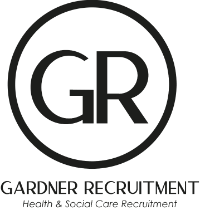CV Writing Support
CV Writing and Getting THE EDGE ™
Jack Marshall a Chartered Fellow of CIPD and one of a very few CIPD members to have received an ‘exceptional service to human resources for over 30 years’ award from CIPD is offering this insight to effective CV writing. Send us your CV and Jack will give a complimentary appraisal and review of your CV.

Give your CV the EDGE™. Research indicates that recruiting people by CV’s and interviewing someone is not a precise or accurate way of making selection but it is almost the only way the world we live in operates. Look at your CV and ask yourself out of 30 people’s CV’s where would you rate yours. Be honest and if it is the same CV you have used for the last year well I would suggest it isn’t much good! This short article explain how you can make fundamental changes to the way you approach your own CV and how to get the EDGE™. If you are interested in getting more support or coaching please contact me on the above email address.
What should go in your CV?
In most occasions your CV (curriculum vitae, Latin for course of life) is often your first chance to make a good impression. It is your personal marketing tool which communicates your academic qualifications, work experience and skills to potential employers and also importantly it should get over a sense of who you are.
It should be relevant and tailored to the opportunity you are applying for. The main aim of your CV should be to highlight your strengths and suitability for the post in order to progress to the next stage of the recruitment process. People who send the same CV to all the different jobs and recruitment agency without carrying out some form of matching process are less likely to be considered.
The Profile at the top, where the human eye goes first on a page of paper, should be a description of why you should get the job. Imagine shaking hands with the person who says ‘why should I give you this job’, think about what you would say and I bet you it’s not telling them your name, address, date of birth and what school you went to! Practice your handshakes for different jobs I was a PE teacher, a trainer, a manager and a business owner so depending on what job I apply for I consider what I think they need to hear and start from that point.
Make it direct and make it particular to the actual job you are applying for and the information you know about the company, the role and what they are looking for. Try to ‘mirror’ the skills and experience and your behaviours that match what they are looking for! A quick read up on NLP will help explain about mirroring and NLP techniques that pay dividends in creating THE EDGE.
Before you start your CV
It is essential to research thoroughly what the employer will be looking for. For example, research job descriptions, company websites, and personal knowledge and experience. Then focus on your experience, knowledge, skills and attributes to tailor your CV to the requirements of the position. Get people’s name and look them up on LinkedIn.
Do you know who we choose? We choose people who we like and we like people who are like ourselves!
One simple way of preparing the relevant information is to divide a blank A4 page in two, note down all the requirements of the post and try to match them to your experience. Remember to consider all aspects of your life in terms of what you have to offer. For example, spare time activities and family commitments will often offer valuable evidence of relevant skills.
What should go in your CV?
The average employer spends between 15 seconds and 1 minutes reading a CV and recruitment companies will dismiss your CV within five seconds if they can’t see what they are looking for. Therefore it is essential to make an instant impact. You must demonstrate evidence of your achievements, skills, qualities and behaviours, concisely and explicitly and all within the 15 second rule.
Put your stopwatch on and see how many word you can read in 15 seconds (70 words?). Now make sure you catch their attention and make the matches in the first 70 words of you CV. I call this the Matching Profile™.
Employers tell us that skills-based CVs work best. This means detailing the skills you possess that are relevant to that opportunity and clearly demonstrating where you have used and developed these.
Provide some of this in the Matching Profile and then make sure there is further evidence in the main body of your CV.
The most effective CVs are highly tailored to suit the sector and roles to which you are applying. This may mean you need different versions for different roles.
Tailor your CV
CV layout
In the UK, a standard CV is two pages of A4. However, academic CVs can be much longer. Typically, you should include:
- personal contact details Put these in the Header and minimise the space they take up
- education and qualifications Potential start your profile with any direct achievements are in your Matching Profile™, such as A post grad in Chemistry placed me in my first job with ABC company.
- work experience (paid and voluntary) You look and find on LinkedIn that the owner is an avid supporter of ABC and you have similar hobbies or beliefs so put that in your Matching Profile™.
- skills we develop millions of skills, choose the top 30 you think they need to know about and get them in your CV
- interests as above
- referees my advice unless specifically asked for don’t put referees down on the CV but in your accompanying email mention they can be provided.
These headings are flexible. It’s your CV so don’t feel like you have to include headings that aren’t appropriate to you or in that Matching Process™. Create a personal CV and avoid using templates. And you should use them to suit the focus of your application. I got a piece of work five years ago and I found out that it was because I had been a PE teacher 40 years ago that the hirer had been as well and just hit it off.
Ensure you create a good first impression. Don’t use negatives, stay in the present and use numbers to project experience. If I say I have worked with customers for five years well that’s OK but what if I say I have worked with 1145 customers in the last two years with a customer care rating of 9.4!
A clear, professional layout usually works best. Ensure you are consistent in your style and use a professional font e.g. Arial, Verdana or Calibri. Take care with your spelling and grammar. Avoid large chunks of text and use bullet points and bold appropriately. Use numbers and figures to support your experience, put down any awards.
Space denotes importance on a CV. Give plenty of space to your key achievements and push less relevant things further down the page. For example, make sure your current degree is given plenty of space if it is relevant to the Matching Process™. Use reverse chronological order so that your most recent experiences come first or use competencies if things you did 10 years ago are relevant to the Matching Process™.
Competency CV’s are exactly the same as above they should consist of the Matching Profile™ and some Key Achievements and then the Competency Headings you are going to use such as Communication Skills, Supervising Others, Managing Performance and Team Building.
Traditional, professional CVs in the UK don’t include photos or many images and use colour very sparingly. However, in more creative industries such things may be the norm – so do your research and find a format that works for you.
You’ll usually send your CV along with a covering letter or covering email. This is your opportunity to tailor your application directly to the opportunity you’ve applied for and highlight the most relevant aspects of your CV.
Referees
People use a variety of referees. Generally one should be an academic reference and the other should be a work-related or personal referee.
- An academic referee should be your Adviser of Studies, a lecturer/tutor, or a supervisor.
- A personal referee should ideally be someone who has known you for a long time, but not a family member.
- A work related referee could be your most recent employer or internship supervisor.
Be sure to choose someone who will support your application effectively. Ask your referees:
- if they are willing to provide a reference before putting their name in your CV
- if you give their contact details on your CV
Always give your referee a copy of your CV and keep them informed about your career plans.
Applying overseas
Depending on where you apply, you may find some of the conventions of UK CVs are not applicable. For example, in much of North America, a short one page resume is required by most employers.
The Careers Service’s GoinGlobal is a great resource to help you get started with preparing or adapting your CV for use in the country to which you are applying.
Your existing networks including LinkedIn (family, friends, staff from your previous university etc.) may also be able to help you when trying to figure out what works in the countries in which they live.
Ask Jack Marshall to provide you with some complimentary feedback on your CV, contact us today by visiting our resources page www.GardnerRecruitment.com/Resources
